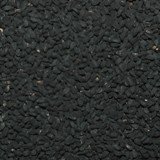Ceylon Cinnamon (Cinnamon Zeylcanium) has been sought after for centuries. It has many culinary as wells as medicinal usage. It is a bakers favorite for making sweet dishes, cinnamon rolls, flavored tea etc. Recently, it has been used by diabetic patients.
How to differentiate between Ceylon Cinnamon & CassiaMost of the cinnamon sold in US grocery stores is not Ceylon Cinnamon, it is either Cassia, Saigon Cinnamon or Indonesian Cassia. Ceylon cinnamon, using only the thin inner bark, has a finer, less dense, and more crumbly texture, and is considered to be less strong than cassia. Cassia has a much stronger (somewhat harsher) flavor than cinnamon, is generally a medium to light reddish brown, hard and woody in texture, and thicker (2–3 mm thick), as all of the layers of bark are used. Ceylon Cinnamon is shown below

Due to the presence of a moderately toxic component called Coumarin, European health agencies have recently warned against consuming high amounts of cassia. This is contained in much lower dosages in
Indonesian Cinnamon due to its low essential oil content. Coumarin is known to cause liver and kidney damage in high concentrations. True Ceylon cinnamon has negligible amounts of coumarin.
Federal Institute of Risk Management in Germany advises people to stop using Casssia due to it medical impacts. See this reference
http://www.bfr.bund.de/cd/8487 for more information.
The two barks, when whole, are easily distinguished, and their microscopic characteristics are also quite distinct.
Ceylon Cinnamon sticks (or quills) have many thin layers and can easily be made into powder using a coffee or spice grinder, whereas cassia sticks are much harder.

Indonesian cassia is often sold in neat quills made up of
one thick layer, capable of damaging a spice or coffee grinder. Saigon cassia and Chinese cassia are always sold as broken pieces of thick bark, as the bark is not supple enough to be rolled into quills. Picture shows the Cassia that has a single curl.
UsageCinnamon bark is widely used as a spice for flavoring. It is principally employed in cookery as a condiment and flavoring material. It's used in the preparation of chocolate, especially in Mexico, which is the main importer of true cinnamon. It is also used in the preparation of desserts, such a
s apple -pie a
nd rolls as well as spicy candies,
tea,
hot coca, and liqueurs . True cinnamon, rather than cassia , is more suitable for use in sweet dishes due to sweeter taste. In the
Middle East, it is often used in savory dishes of chicken and lamb. In the United States,
cinnamon and sugar are often used to flavor cereals, bread-based dishes, and fruits, especially
apples. Cinnamon can also be used in pickling. Cinnamon bark is one of the few spices that can be consumed directly.
Cinnamon powder has long been an important spice in Persian cuisine, used in a variety of thick soups, drinks, and sweets. It is often mixed with
rosewater or other spices to make a cinnamon-based curry powder for stews or just sprinkled on sweet treats.
In medicine it acts like other volatile oils and once had a reputation as a cure for colds. It has also been used to treat diarrhea and other problems of the digestive system. Cinnamon is high in antioxidant activity.The essential oil of cinnamon also has antimicrobial properties, which can aid in the preservation of certain foods.
Cinnamon has been reported to have remarkable pharmacological effects in the treatment of type II diabetes and insulin resistance. Recent advancement in phytochemistry has shown that it is a Cinnamtannin B1 isolated from C. zeylanicum which is of therapeutic effect. Cinnamon has traditionally been used to treat toothache and fight bad breath and its regular use is believed to stave off common cold and aid digestion. References for medicinal usage can be found at http://en.wikipedia.org/wiki/Cinnamon
























